If you're planning to tackle this 100-mile Alpine route, here are some tips on the best backpacking gear for the Tour du Mont Blanc!
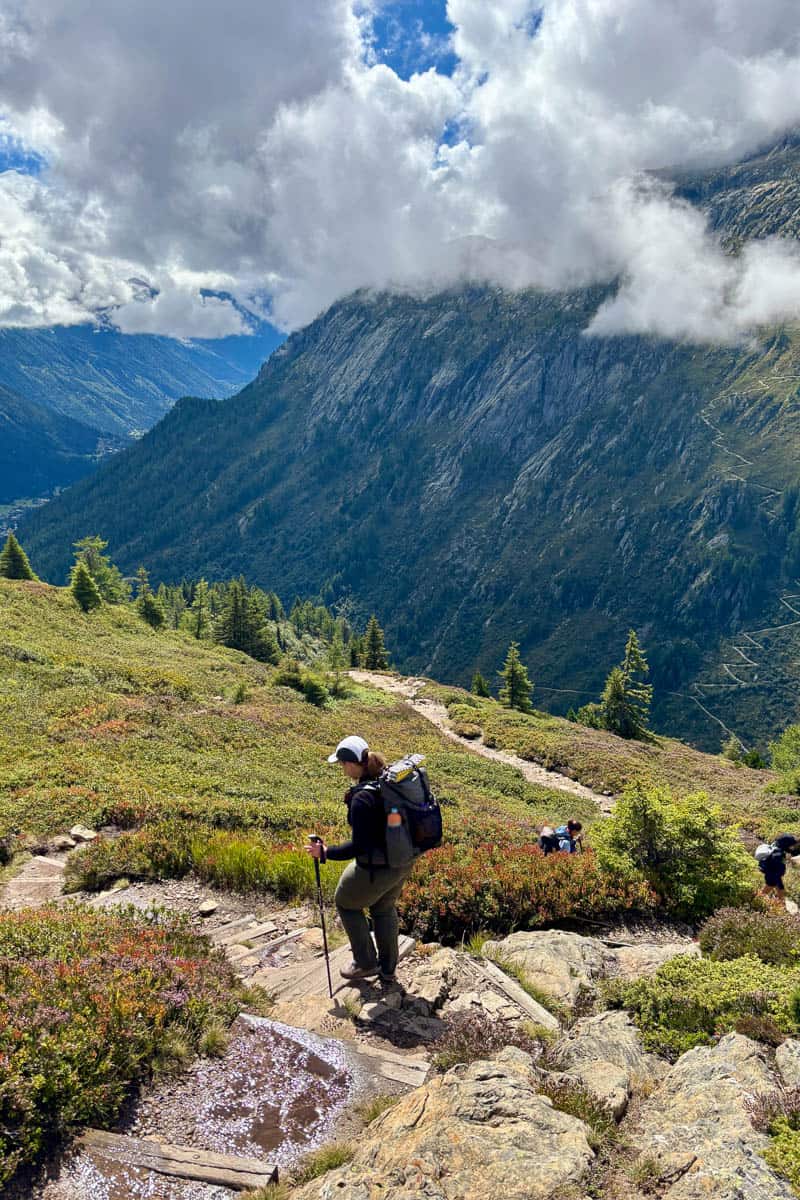
When my husband and I decided to tackle the challenging Tour du Mont Blanc, we knew that having the proper gear could make or break the trip. It's long, includes major elevation changes, and parts of the trail (or its variants) can be rough terrain.
With this hike now in hindsight, I'll share with you what we used, what worked well, and what we wouldn’t take again.
On this trip, we prioritized pack weight over luxuries, because we knew we’d be climbing over 30,000 feet in elevation over the course of the trail.
I've also written about some of our most important lessons learned on this route, options for shortening the hike, and a detailed look at each stage, starting with Stage 1 and more coming soon.
Backpacking Gear We Loved for the Tour du Mont Blanc
Overall, we were quite happy with our gear. Here's the gear that stood out the most as being fantastic.
Basic Gear
- Our backpacks
He used a Zpacks Arc Haul (the same pack he used and loved when backpacking in Iceland) and I used the Durston Kakwa (with rain liners in both).
This was my first time using the Kakwa. I had multiple people stop and ask how I liked it. I can say without hesitation that it’s my favorite pack ever.
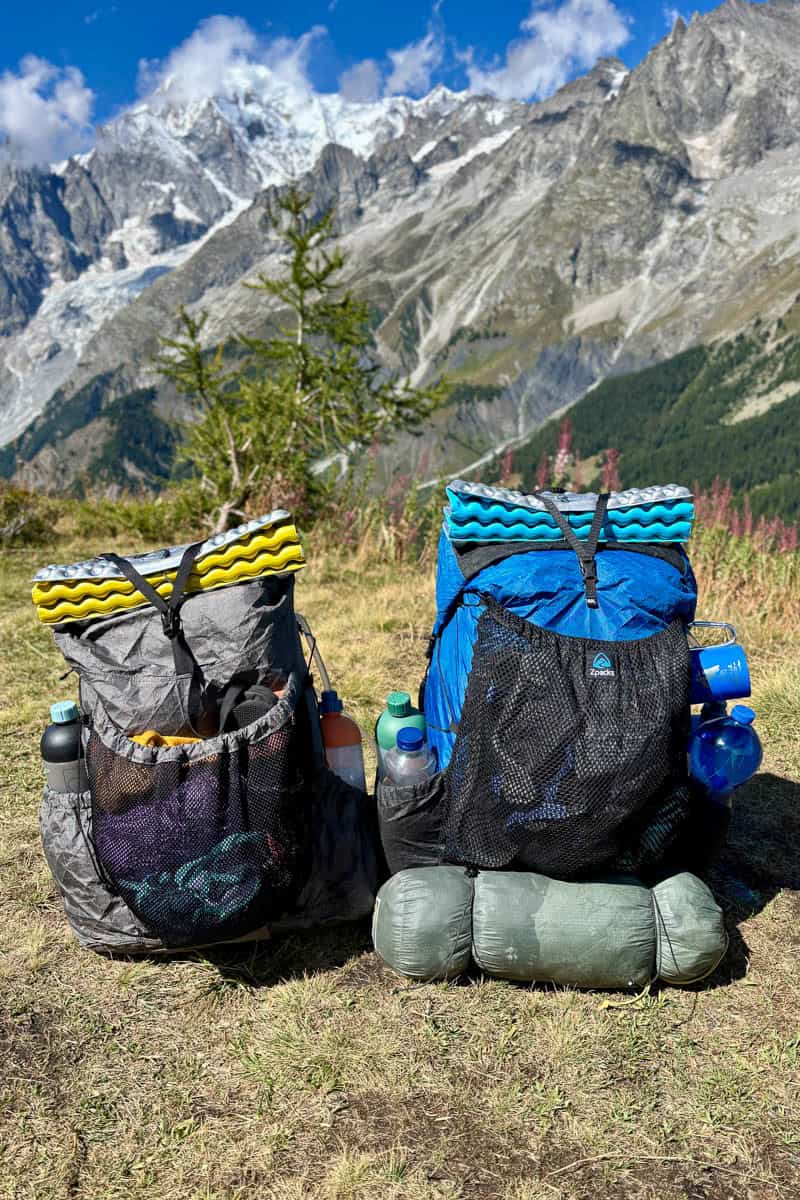
I loved how much I could fit inside the Kakwa 40, and despite not having a trekking pole loop, the poles fit snugly in the side pocket when not in use.
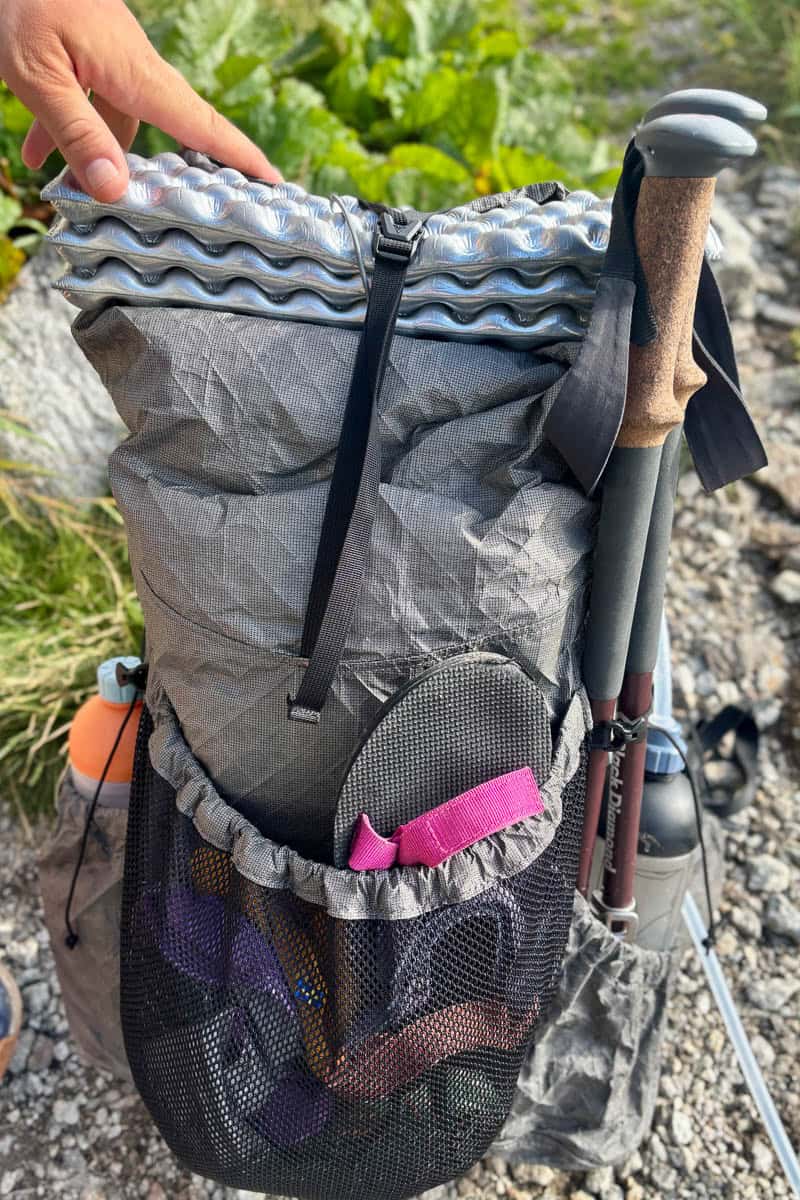
We opted for these over heavier (though still lightweight!) backpacking chairs, because we heard there would be lots of picnic tables or actual tables at camp, and that was correct. The sit pads were also very handy and quick to use when eating lunch on trail.
This tent continues to impress me. It’s extremely lightweight, roomy and sturdy. It stood up well to a rainstorm one night, and we felt safe despite the strong winds.
Camping the Tour du Mont Blanc is totally possible, but you need to know the rules and scenarios for each stage of the trail.
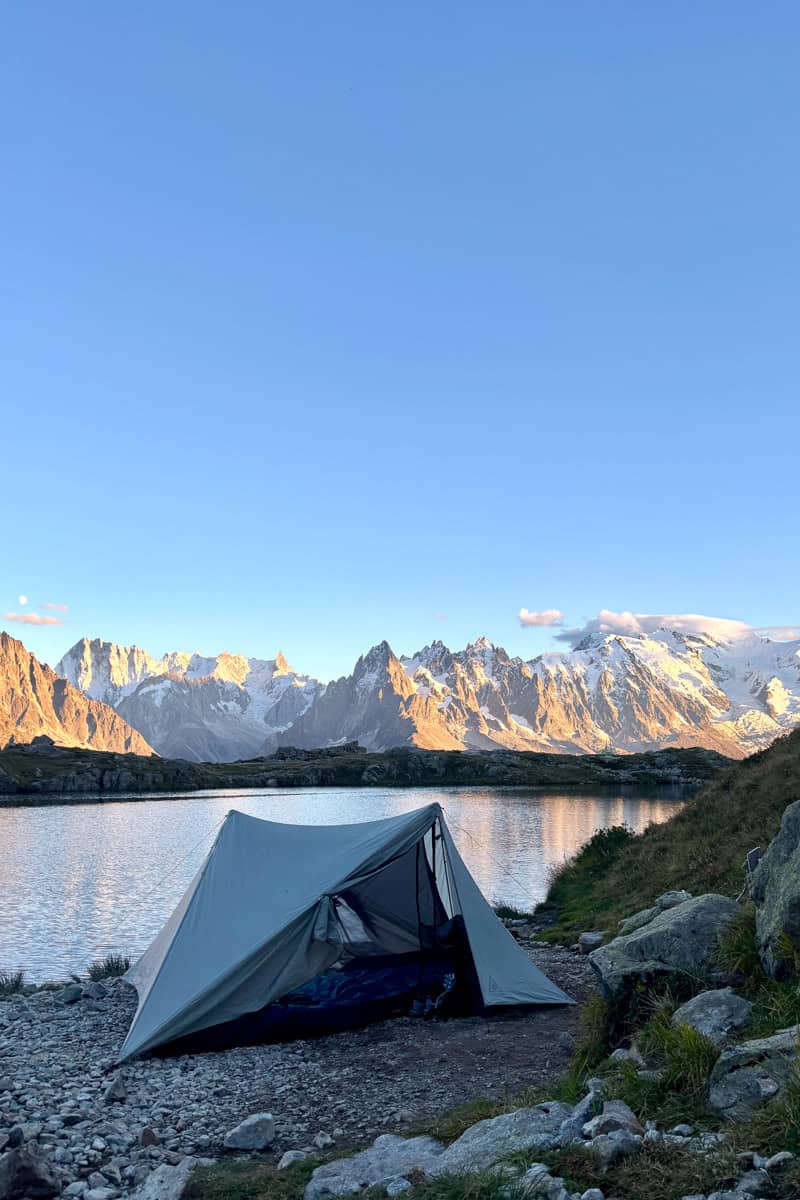
We were not alone in loving this tent. In fact, at almost every campground, we counted multiple other X-mids. (At two campgrounds it actually got a little confusing remembering which tent was ours, and we had someone apologize for attempting to enter our tent by mistake.)
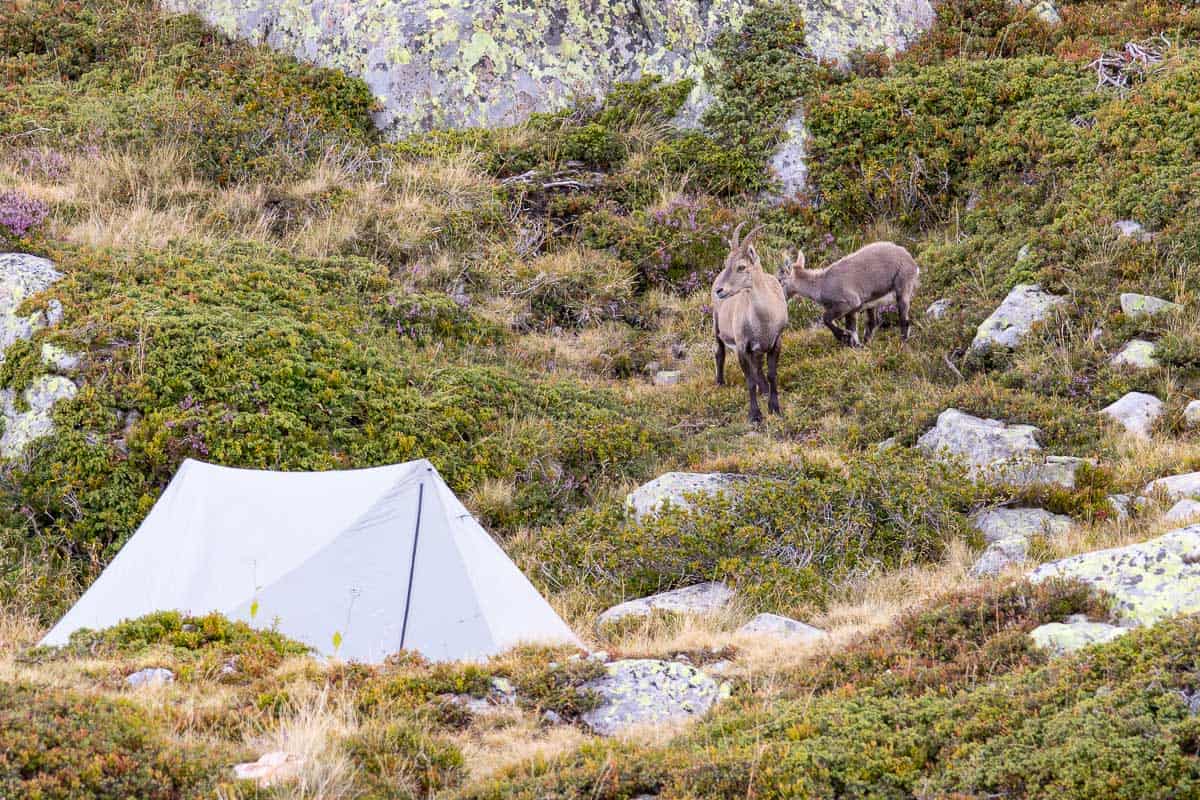
I love this tent and the little community of happy Durston customers.
I’ve used these poles for years, and they just keep on working. There were multiple times on this trip where I accidentally wedged them in between rocks and was worried I’d broken them, but no, they’re still hanging in there!
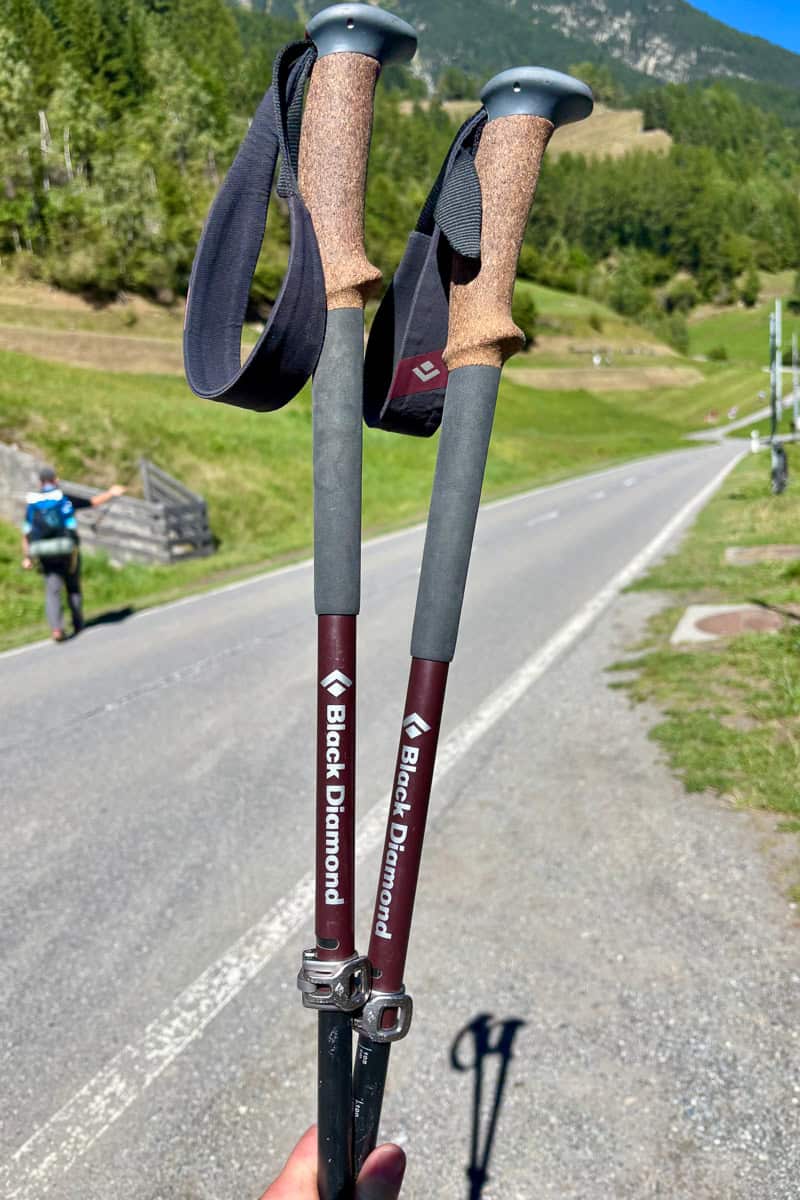
Food + Drink Systems
- M!Go water bottles (two per person) with these hydration tubes
This was my first time doing a long trail without any water bladder, and I cannot get over how happy I was with these bottles.
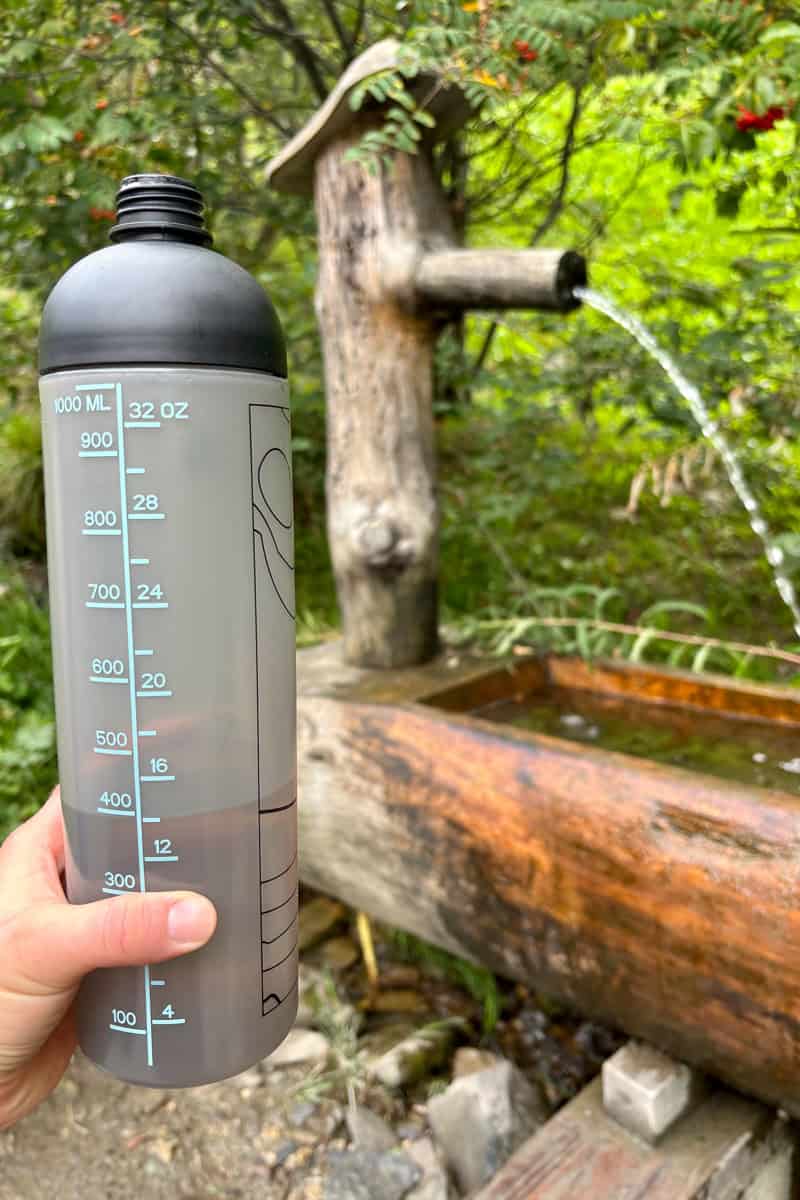
The cookpot is smaller than our normal stove, but on this trip we didn’t need much volume since we were primarily boiling water for instant coffee and buying food as we went. It was too delicious not to!
I particularly loved how well the spouted pot poured water, and I also loved that the wooden lid knob allowed me to hold onto the lid without needing a pot holder.
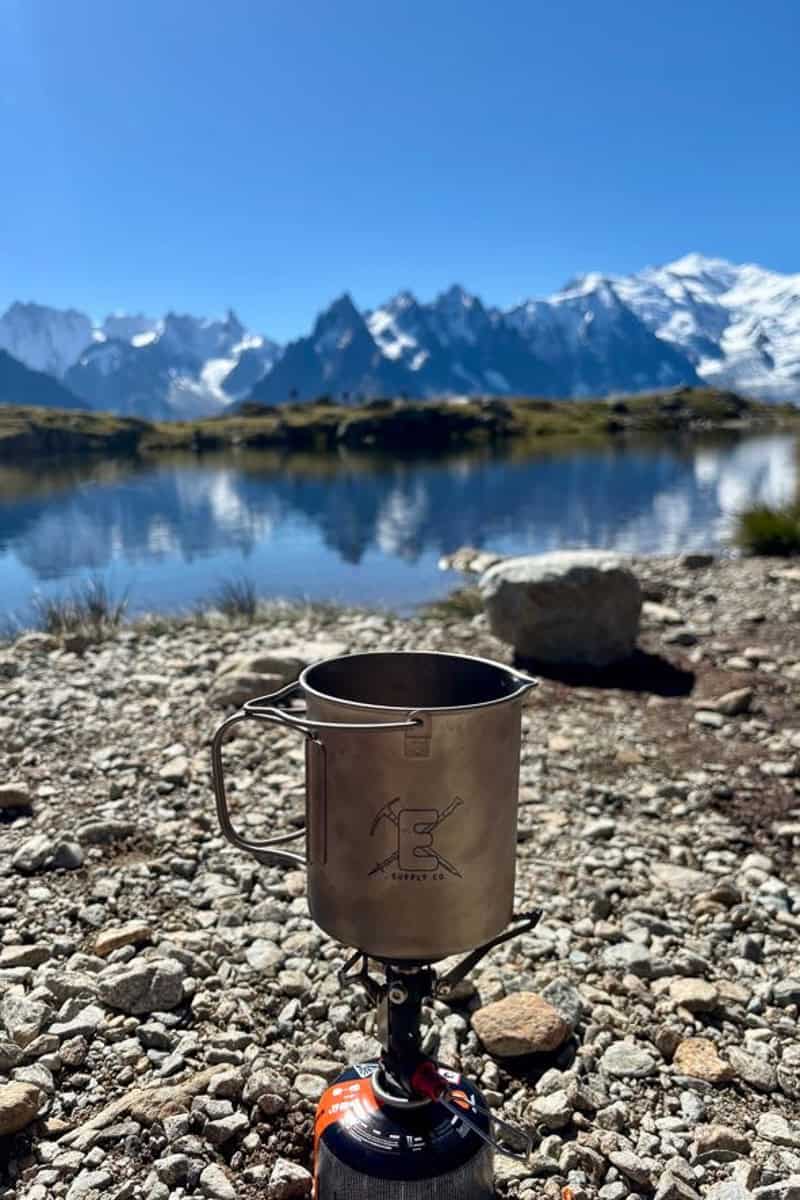
- Long-handled titanium spork (for stirring coffee or eating meals heated in the stove)
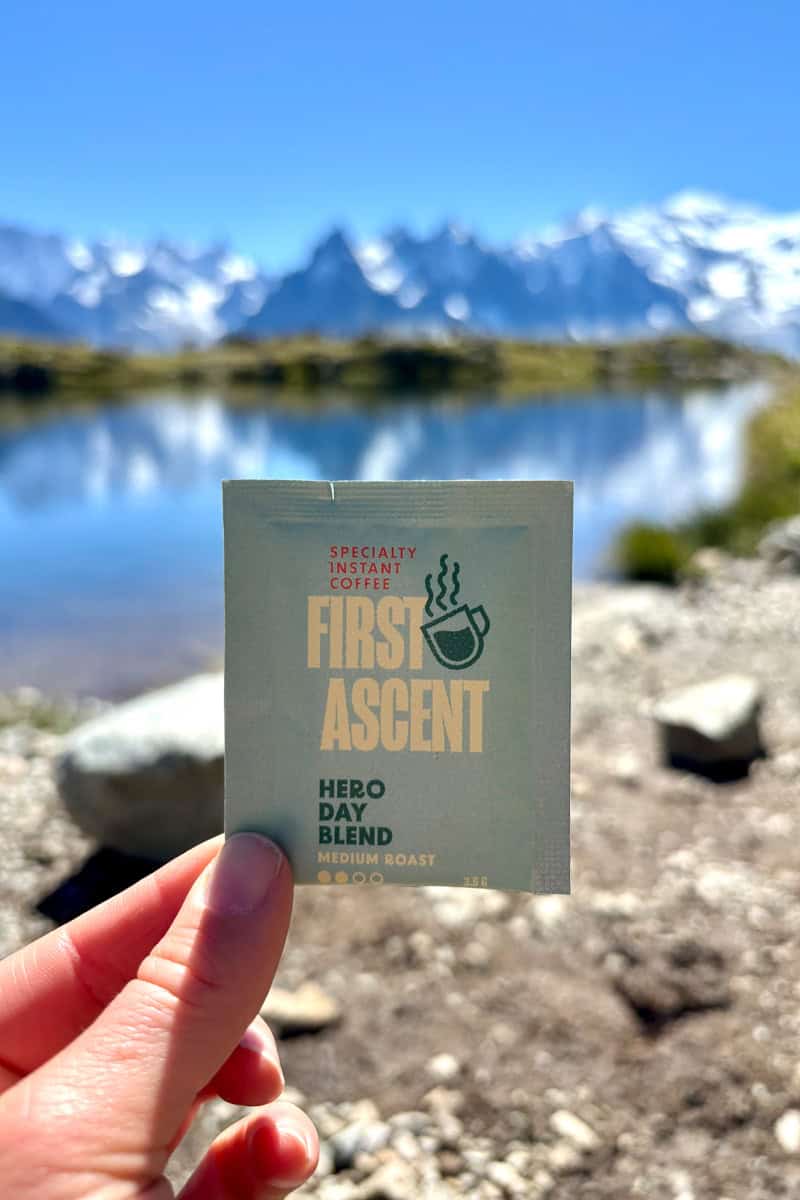
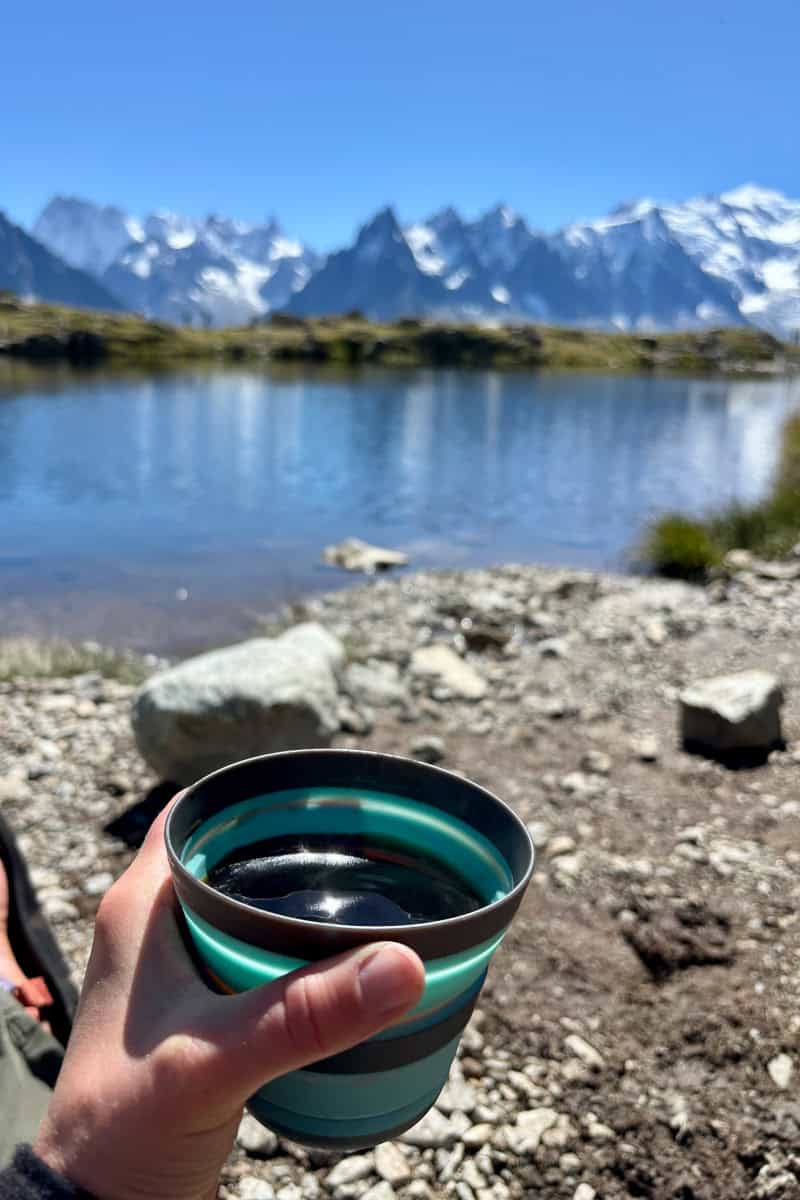
- This Gerber Gear multi-tool (includes a beer bottle opener and a corkscrew)
Clothing
- Montbell rain jackets
My husband brought his tried and true Montbell Versalite jacket that he wore in Iceland. I tried out the Montbell Super Dry Tech Peak Shell (which is supposed to be PFA-free).
Both performed like champs! We were thrilled with how well they did in the rain, and both were breathable enough that we didn’t get overheated.
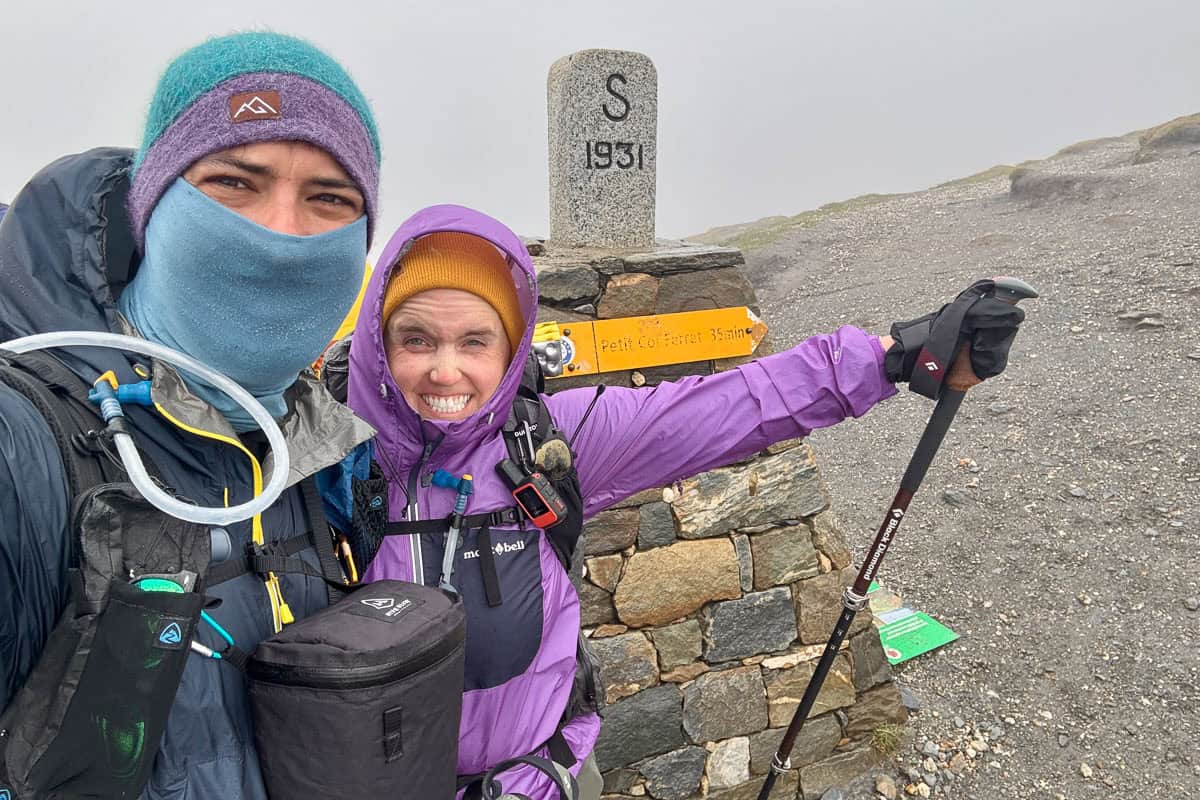
- Altra Lone Peaks
I went back and forth a lot on which shoes to wear on this hike. I debated between the Altra Lone Peaks, Topo Terraventure and Altra Superior.
Ultimately I went with the Lone Peaks, because the rock plate really does keep rocks from poking my foot, especially when compared with the Superior.
I like the more fitted foot body of the Superior and Terraventure better normally, but I guessed (correctly), that hiking for 100+ miles would cause some foot swelling (for me) and that I might be happier in a roomier shoe.
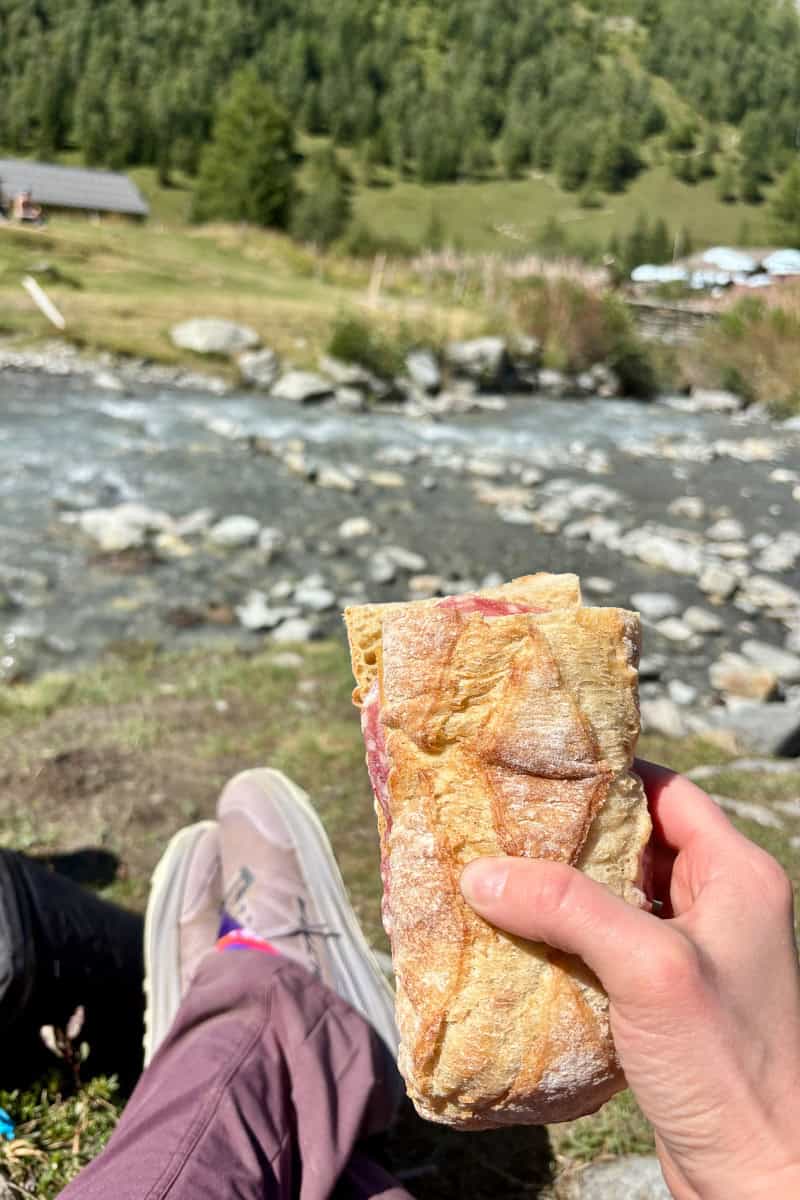
I was absolutely thrilled with my Lone Peaks on this trip, and had basically no foot pain the entire time. (I can probably also credit the happy feet to our attempts to be on our feet for 15,000 steps a day in the month leading up to our hike. My feet were already used to being active.)
My husband also wore Lone Peaks, but he always does, so there really wasn’t much of a decision for him to make there.
I’ve tried lots of hat options over the years, and they almost all have left me overheated once I’m moving. This is the first hat that hasn’t done that, and I’m absolutely thrilled with it.
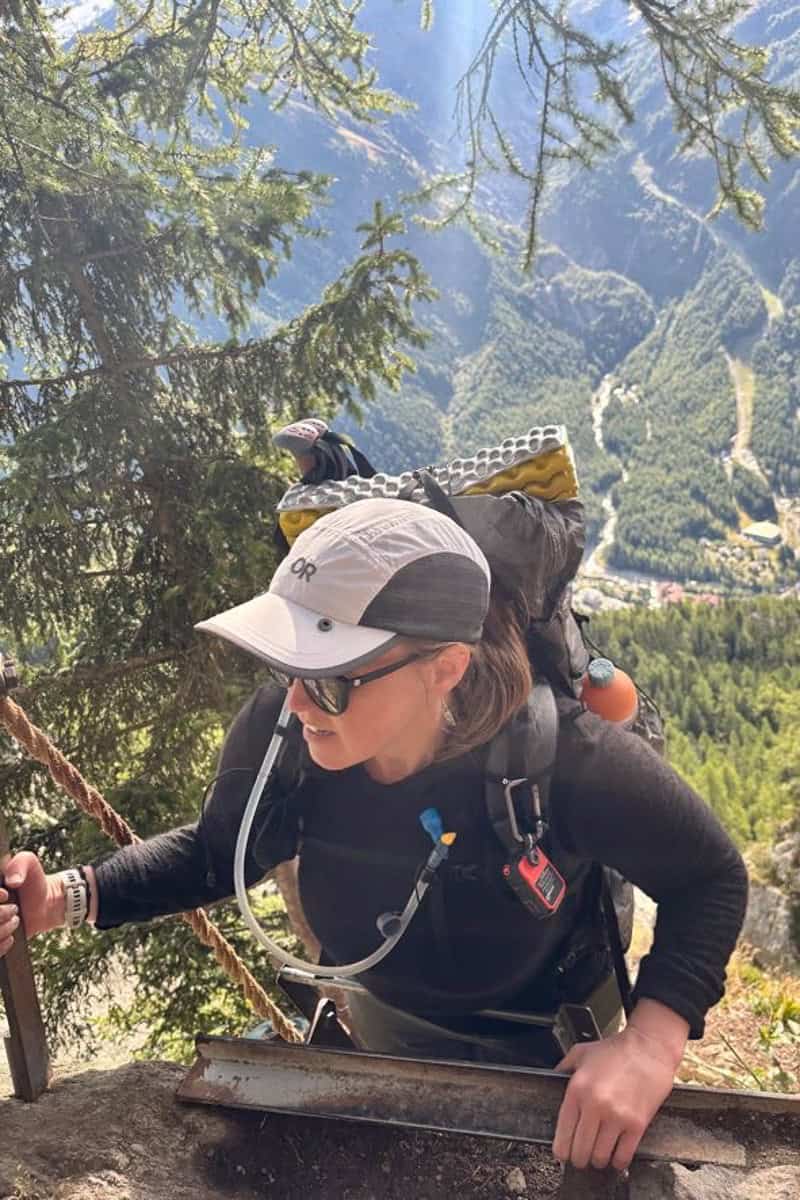
Gear I’d Recommend (With Reservations)
This is gear I’d probably still choose to bring, but it may not be for everyone.
Ok, I love this thing so much! It weighs almost nothing and did a fabulous job helping me roll out sore muscles at the end of the day.
That said, in the past I have carried it on an entire backpacking trip and forgotten to use it. And while it’s not lightweight, it is a little bulky.
If you’re thinking about bringing one along, consider if you’d really use it (or set a reminder to use it at camp).
- Alpaca Sun Hoodies, Shirts and Sweaters
First of all, I still love alpaca clothing and will continue to wear it hiking and backpacking.
But, before you spend money on a pricey alpaca top for the Tour du Mont Blanc, please be aware that this hike is VERY rough on your gear. So if you’ll be devastated if your alpaca top develops a hole, pay attention.
We brought a variety of alpaca items on this trip, including an Arms of Andes heavyweight hoodie, a Paka hoodie, Arms of Andes t-shirts and Arms of Andes Sun Hoodies.
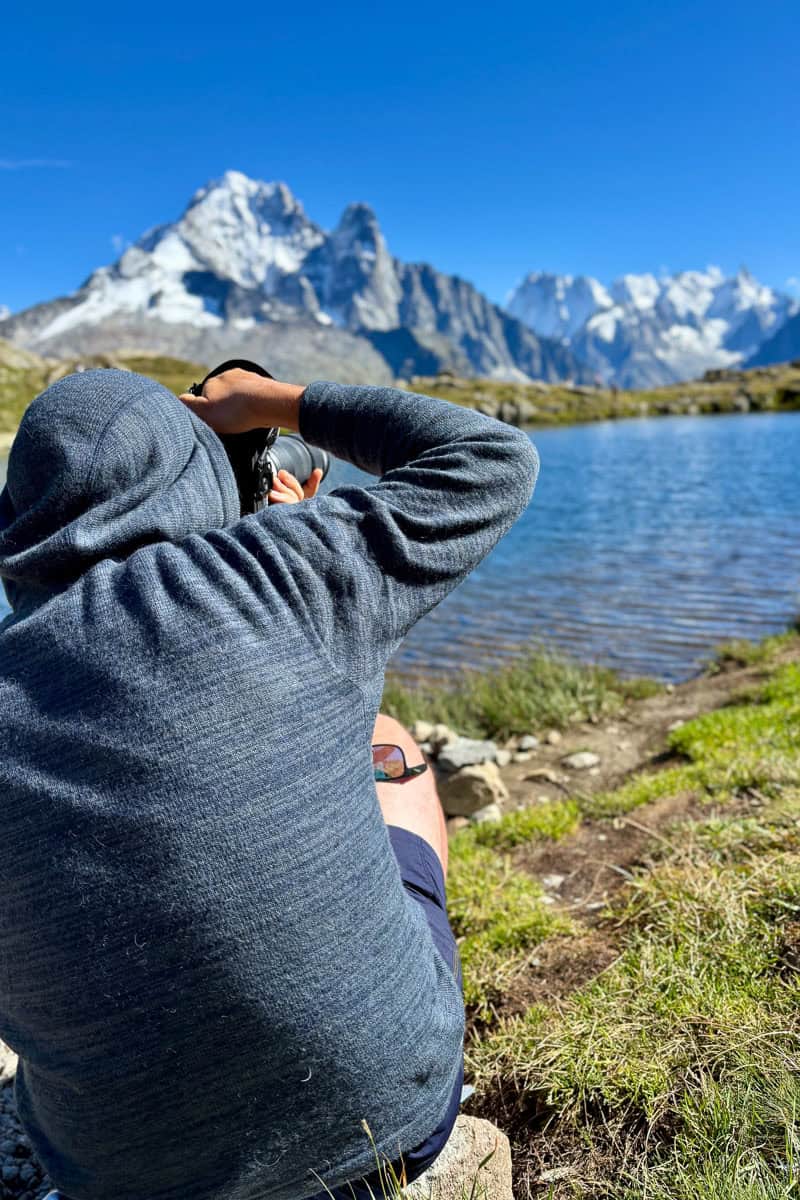
Most of our gear survived unscathed, but any gear that rubbed directly against our backpack buckles developed holes in the buckle area. (Alpaca losses on the TMB: one sun hoodie, one t-shirt)
Pictured below is the sun hoodie I wore for all 10 hiking days.
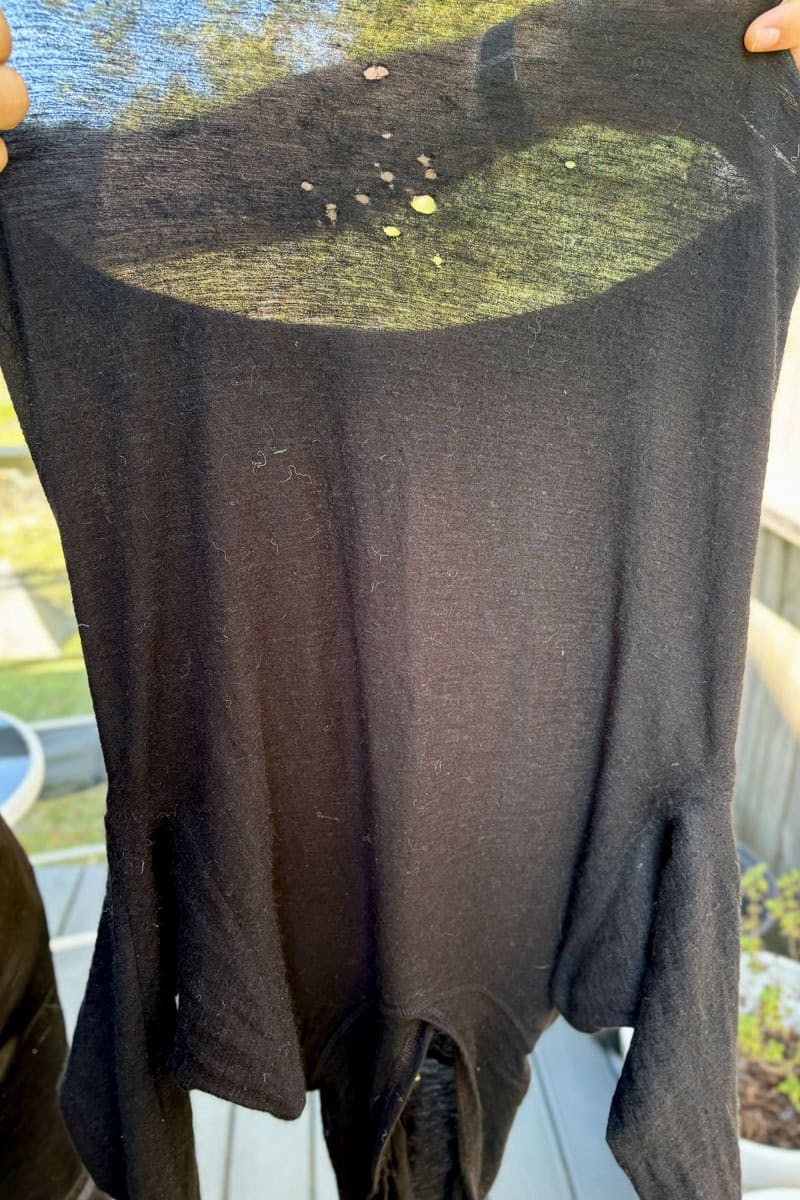
I’ve had similar issues with merino in the past but never to this extent or this quickly. That said, would I wear an alpaca sun hoodie on this trail again?
Personally, yes, I probably would. I was so impressed with the performance (if not the durability), that I’d likely make the same clothing choice a second time. Here’s why:
- It is SO INCREDIBLY odor resistant. Much more so than the wool tops I’ve tried.
- I have a hard time with temperature regulation, and the alpaca helps so much. For instance, it’s breathable and doesn’t make me feel overheated.
At the same time, I tend to get easily chilled at camp because my clothes are sweaty from a long day of hiking, but the alpaca dried so quickly that it wasn’t much of an issue on this trip.
So for me personally, it would likely still be worth it.
Ways to stop the holes from forming include: tucking in your shirt (I refuse) or using the alpaca as a base layer so that it doesn’t touch the pack waist belt.
Gear I Didn’t Love (For this Trip)
First, a bit of context for my first two bits of gear that I’d change if we returned.
The TMB is not immune to norovirus, a common issue on long distance hiking trails (though you might be more familiar with it as a cruise ship malady).
It’s transmitted by touching contaminated surfaces and can also be in contaminated water.
Before we left for this trip, I’d heard chatter that it was becoming prevalent on-trail, but decided not to be overly paranoid and just carry on with usual precautions (like hand washing with actual soap, not hand sanitizer). In case you’re wondering, hand sanitizer is not effective against norovirus.
Well, spoiler alert. I got sick, though thankfully not until the very end of our hike. Here’s what I’d do differently if I returned.
Also, I am not a medical professional, so if you’re looking for medical advice, please consult a doctor. The following is just my personal experience and informed decisions I’d make because of it.
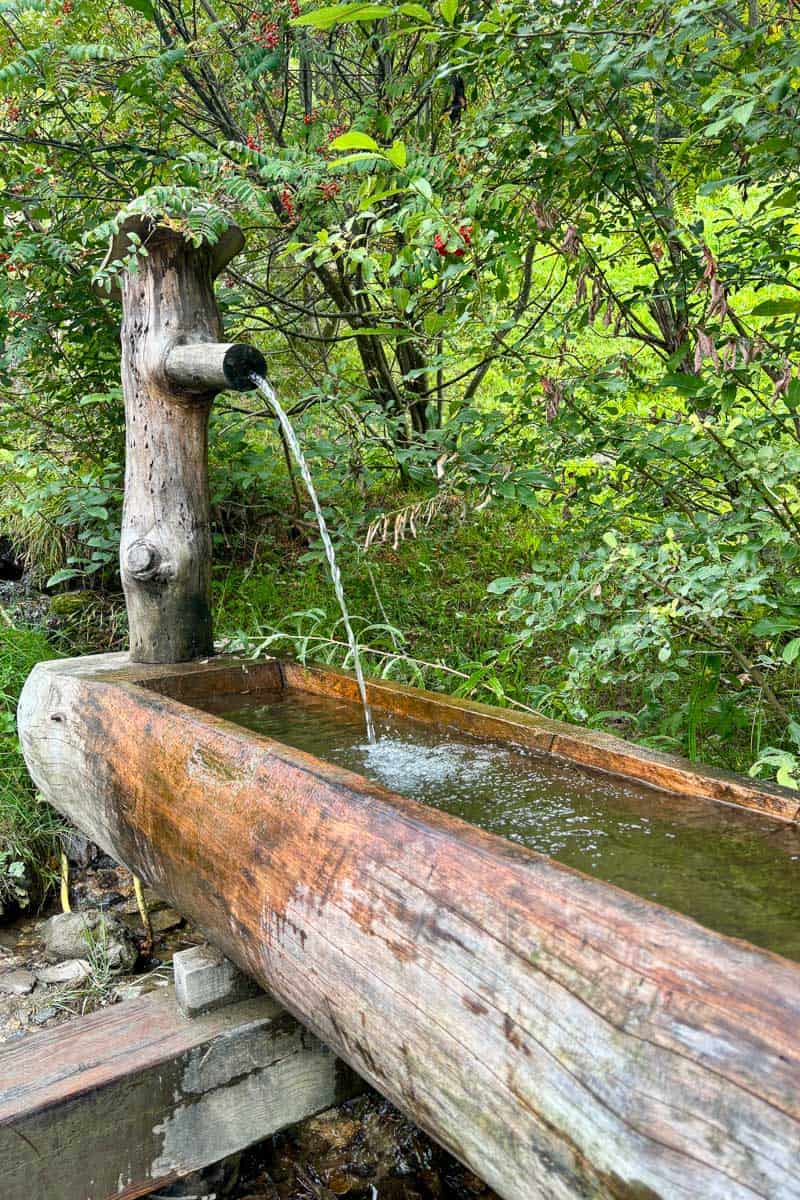
Our water filtration system
We brought our usual Cnoc water bag and a Sawyer Squeeze mini filter, which we used to filter all water not clearly marked potable. To be clear, we are thrilled with both of these items and will use again in the future. (Though we will be backwashing the Sawyer squeeze with bleach before reusing.)
Water filters like the Sawyer Squeeze do not filter out viruses. If we returned, I’d opt to use a chemical treatment on all water (even water marked potable) before drinking.
Our hand soap
The bathrooms along the TMB are almost shockingly soap-free, even in non-wilderness areas. I followed advice to bring my own soap, have it on hand and use it every time I used a restroom and before eating.
But I think I could’ve made better soap choices.
I brought two different soaps, and the first one, Dr Bronner’s mini liquid soap, is what I was very happy with and would bring again. Dr Bronner’s is a type of castile soap that is thought to be effective against germs like bacteria and viruses.
Once I ran out of my Dr Bronner’s soap, I switched to my backup soap: a lightweight powdered soap with baking soda as the primary ingredient. Baking soda has many wonderful uses (such as cleaning surface grime and deodorizing), but I couldn’t find any reputable source claiming that it was effective in removing viruses and bacteria.
Like with the water filter, I’m not saying this soap is not a good product in the majority of situations. In fact, I may opt to use this soap in the future on more isolated trails. (I love how lightweight it is!) However on this trail, I’d choose a different product.
Gear We Wouldn’t Bring Again
We tried out a few new items on this trail and there were a couple things I didn't love.
Listen, I know these are a thing right now. I get it. They’re lightweight, you can bring exactly how many you need and you’re not stuck carrying a plastic tube. Sounds great.
But I had a texture issue with these. First, it’s weird that it feels like you’re eating a mint, and second, I always felt like I had bits of toothpaste tablet stuck in my back teeth. I do not like it!
Are they all like this? Should I try a different brand or return to my trusty mini tube?
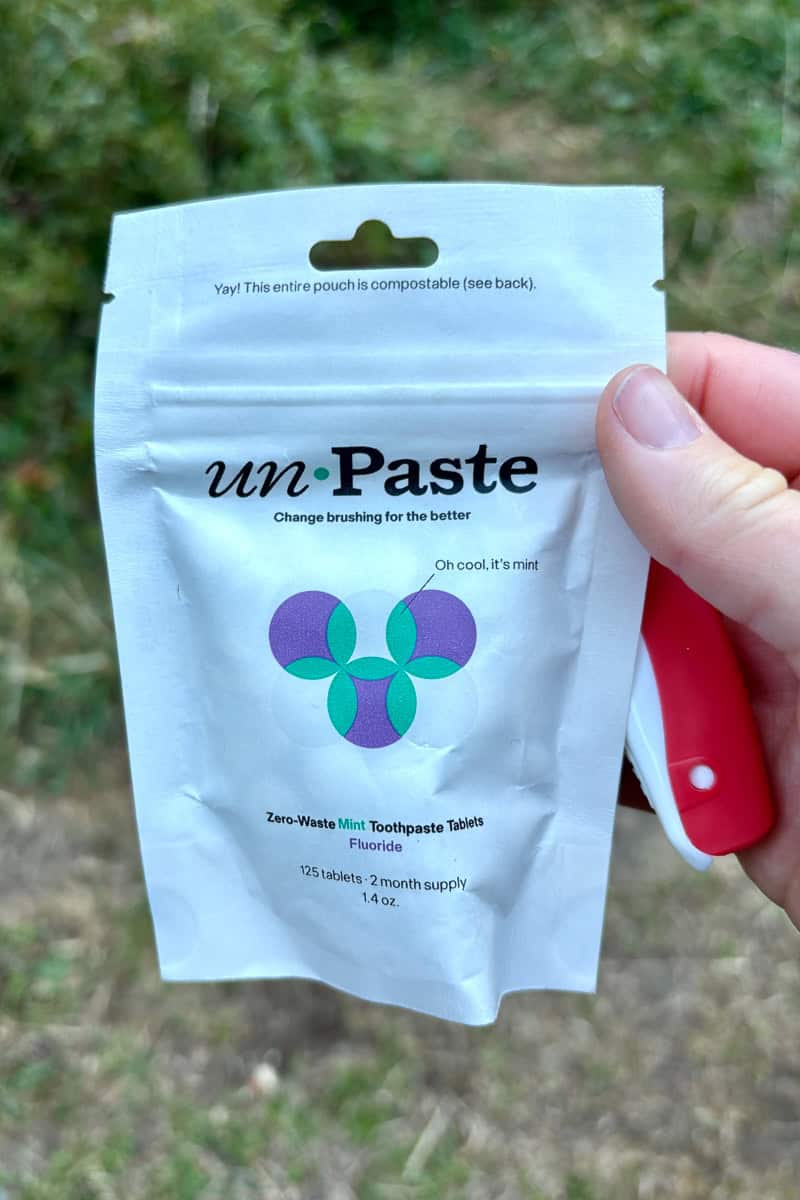
These seemed neat because we could plug them into our usb-c battery bank cables and didn’t need to pack a separate cord for our watches. But they stopped working consistently partway through our trip.
Next time I suppose we’ll bring actual Garmin charging cables, unless anyone has a suggestion for a different adapter.
Backpacking Gear I Repaired After the Tour du Mont Blanc
While my alpaca sun hoodie appears to be damaged beyond repair, there are other things I’m attempting to repair instead of buying new gear. (Whether my patches hold or not is another story.)
- Our Evolved cookpot carrying bag
I accidentally burned a hole in this bag while boiling water for coffee. (Oops.) Yes, I know the bag isn’t technically necessary, but I like to use it as a pot holder.
When we got home I put some gear repair tape on the inside and a NoSo patch on the outside. We’ll see if it lasts, but I’m kind of liking the look.
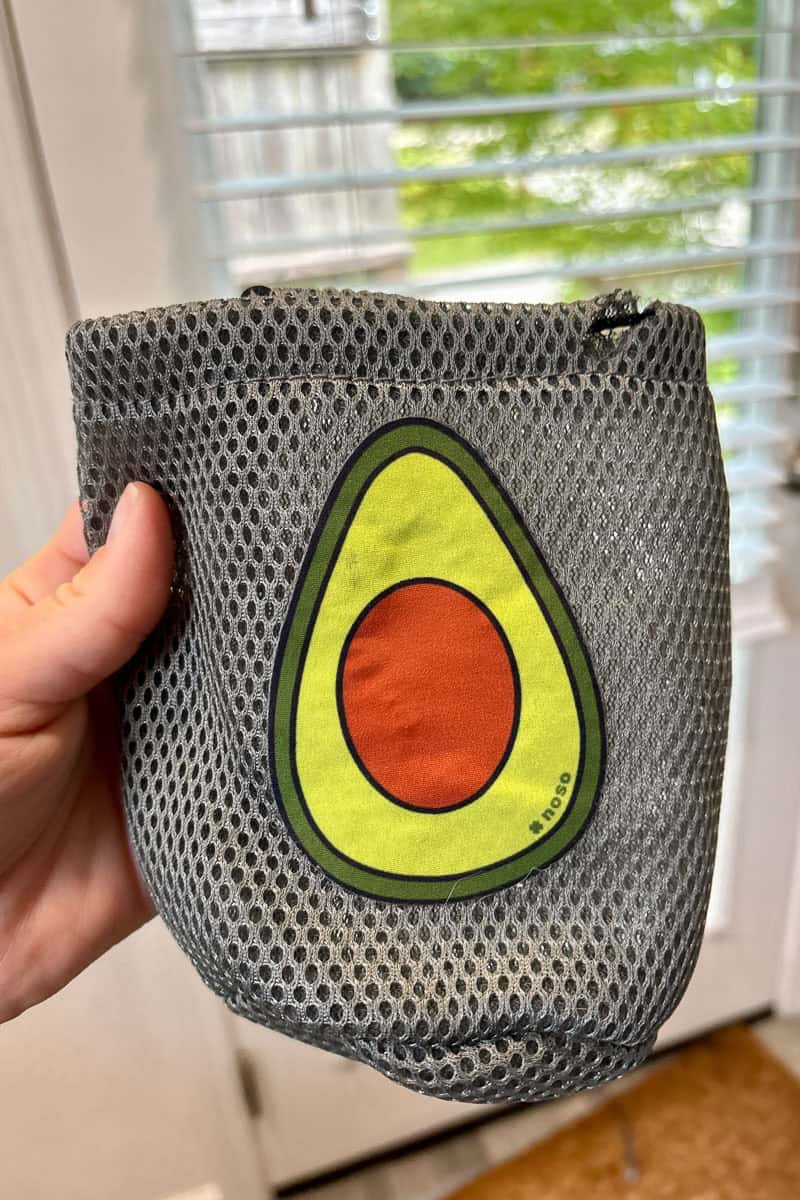
I hope this overview helps you weigh what backpacking gear you need for the Tour du Mont Blanc! It was an experience we treasure.

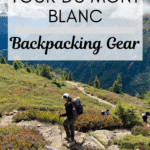
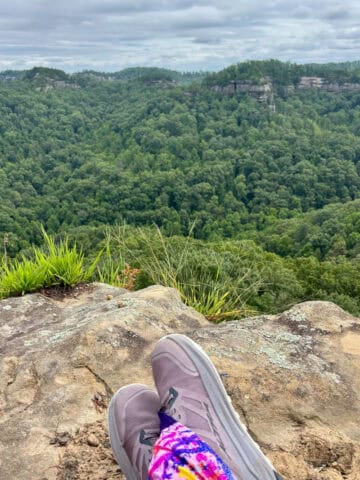



Leave a Comment: